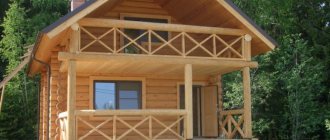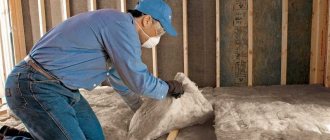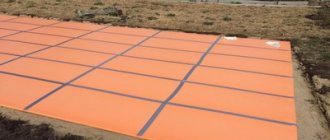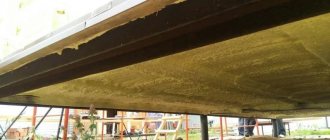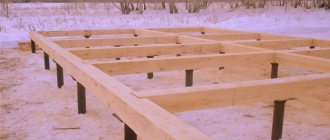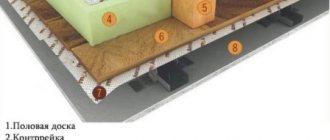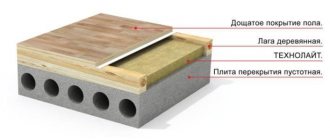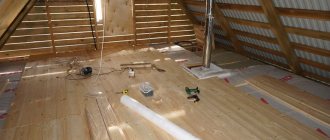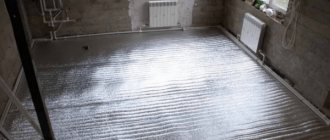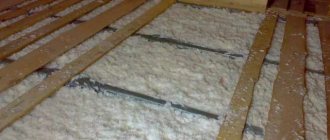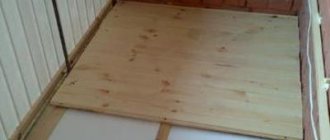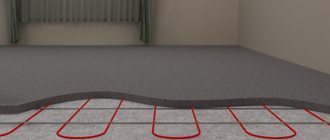0
3268
30.10.2013
Laminated foundation waterproofing is used to protect against pressure groundwater with a hydrostatic force of more than 0.1 MPa. It is distinguished from coating waterproofing by its greater mechanical strength and water resistance. Pasted waterproofing is carried out in the form of a continuous carpet, consisting of several layers of rolled material, connected to each other using mastics and adhesives and fixed to the base.
Pasted waterproofing of the foundation
Installation of roll materials can be carried out in several ways:
- Gluing using mastics and glue;
- By gluing on a self-adhesive layer;
- Fusing by heating a bitumen or polymer layer applied to roll waterproofing.
Classification of TechnoNIKOL roll roofing
TechnoNIKOL soft roofing for Economy class roofs is designed for waterproofing a variety of construction buildings and utility rooms. Despite its low cost, such a roof provides excellent protection against temperature changes and lasts up to 20 years. Euroroofing felt and Bikrost are representatives of the economy class soft flow coating. These materials are characterized by ease of installation. Euroroofing felt is less carcinogenic and has low toxicity compared to regular roofing felt.
Bicroelast and Biopol belong to the Standard class. TechnoNIKOL coating of this class perfectly copes with the protective function, it is convenient to install, it has increased resistance to external factors and mechanical influence, and has a long service life. It is worth noting that this type of product has an acceptable price-quality ratio. Biopol is most often used for waterproofing foundations and additional carpet on roofs. Marking will help determine for which work a particular material should be used. Biopol P is used for the lower roofing carpet and protection of foundations from water. Biopol K – for the outer layer of the roof. Bicroelast has similar characteristics and markings.
Roof covering with soft roofing Bicroelast Source stroypay.ru
See also: Catalog of companies that specialize in roofing materials.
A representative of Business class roll soft roofing is Uniflex. It is widely used in construction in various climatic zones. Marking will help determine the type of topping and the area of application of this material. Uniflex K - used for the top layer of coating. It has a coarse grain coating. A Uniflex P - with fine powder is used for waterproofing structures. The basis for this coating is polyester, fiberglass or fiberglass.
Premium roll roofing has earned an excellent reputation in all countries. Technoelast is a representative of this class of coatings. Technoelast has increased waterproofing properties, the greatest strength and durability. It is used in different climatic zones for roofing buildings and for protecting structures and foundations in places with high groundwater pressure and high sub-zero temperatures.
Another representative of the Premium class is TechnoelastMost - a coating that is used for waterproofing bridge structures and floor slabs. The artificial rubber base will reliably perform its functions under conditions of increased loads.
When laying, the lower part of the roof warms up, which allows it to adhere to the surface Source hi.decorexpro.com
Methods of use
Depending on the base for which waterproofing is selected (concrete or wood), as well as on the purpose of the room, different fastening methods can be used:
- To install any floors under the screed, you can simply lay the selected insulator. Moreover, the type of screed and the design of the floor are unimportant. The roll can be spread to insulate a wooden floor or under a dry screed. Material laid in this way can be fastened together with other parts of the floor structure. However, the technology of such installation requires careful protection of the places where fasteners pass through the waterproofing. This method is suitable for waterproofing basements and other rooms. Materials with liquid glass, cardboard and polyester can be used.
- Sometimes waterproofing is glued to the base using mastic or glue. The use of adhesive waterproofing on mastic is not allowed in rooms where the temperature may exceed 25°C. That is why this method is more suitable for the basement, where the temperature is not higher than the specified limit. In other places, it is better to use special glue for laying adhesive waterproofing. Film materials are suitable for such insulation. This versatile installation method can be used on wood and concrete floors.
An example of laying film waterproofing on a dry screed or soil
Advice: before gluing the waterproofing, the technological map requires preliminary priming of the base of the concrete floor.
- To install waterproofing, you can use fusing technology using a gas burner. However, the technological map of construction production must allow such a laying process, because it imposes strict fire safety requirements. Only mastic-based materials can be fixed in this way. The method is suitable for concrete basement floors and other rooms with high humidity.
Attention: waterproofing a wooden subfloor or a floor over wooden joists cannot be done using gas burners. They need to be replaced with heat guns.
Soft roofing technology
For long-term operation of the roofing material, it is extremely important to follow the TechnoNIKOL soft roof installation technology. Almost all roll coatings on the market today are built-up. For high-quality and long-term service, it is worth considering a number of features and installation rules. For all TechnoNIKOL products, preparatory work should be carried out before installation.
“Pie” for a warm and leak-free flat roof Source stroypay.ru
TechnoNIKOL coating is most often used for the top layer of flat roofs. Thanks to this, the installation of such coating is reduced to a minimum. There is no need to build a rafter system, and the issue of wind protection is not relevant - since the windage of such a roof is minimal.
Installation of a flat roof begins with laying the base. It is best to use metal or concrete for the base of such a roof. The next layer is expanded clay or crushed stone. Next, a vapor barrier and insulation are laid out. If the insulation material is not rigid enough, then a layer of screed is applied on top. The finishing layer of the roof is TechnoNIKOL coating.
Particular attention should be paid to water drainage. In small buildings, external gutters are used for this purpose. Drain funnels must be installed at the lowest point of the roof.
TechnoNIKOL, how to glue correctly. How to properly install TechnoNIKOL
Tip: Materials with different markings are called the same, they are produced as if in a “pair”. For example, TechnoNIKOL roll waterproofing called “Bikroelast” has two products: “Bikroelast” HKP and “Bikroelast” HPP.
Details about labeling
The difference in markings indicates which layers the material contains. The marking “K” indicates the presence of stone chips on the insulation surface. Such rolls are mainly produced up to 10 meters long and widths ranging from 3.50 to 4.00 mm. The price of TechnoNIKOL roll waterproofing depends on the thickness of the material and footage. It also depends on what composition of bitumen is used and the base material.
The bottom layer, marked “P”, is produced without crumbs; it is “bitumen” on both sides. The length of the material in most cases is 15 meters, but there are also 9 and 10 meter rolls. Thickness is almost always 2.5 mm. This rolled material is used for waterproofing foundations, bathroom floors, and so on.
The material is not simply called the “bottom layer”. In order for the roof to serve for a long time and without problems, it is necessary to lay the bottom layer before laying the top layer.
The technology for laying the material is not very simple
For installation, a gas burner and an open flame are used. For this reason, beginners should get down to business under the supervision of experienced craftsmen.
The operating procedure is as follows:
- Preparing the base. The concrete surface is first leveled and cleaned of construction debris and dirt.
- Primer. The surface needs to be primed. For this purpose, special bitumen primers are used, for example, primers, mastics. The simplest primer for surface treatment is a mixture of bitumen and solvent. The composition can be applied to the surface with a brush, brush, or roller.
- Marking the material. It is best done before installation. The rolls are unwound and cut according to size. When “cutting” it is necessary to take into account the overlap of the fabric.
- Installation. Both the top and bottom layers are glued to the surface using the fusing method. One side of the sheet is heated with a gas burner, then the sheet is laid on the base and pressed. The sheet is heated in rolled form. Start work from one edge of the roof. Fusing of roll waterproofing is done without interruption, in one go. That is, they glue along the entire length of the material.
Tip: The work is best done together. One person heats the material, the second rolls out and presses the roll. But you can do the work alone. Then you will need to have a long hook to push the roll.
Repair work of roll roofing
When the temperature rises significantly in the summer, the roof becomes very hot. And with high humidity, the carpet material peels off, air and water pockets appear, and mechanical damage to the material occurs. To extend the service life of a TechnoNIKOL overlay roof, it is important to regularly inspect the integrity of the coating and promptly eliminate defects.
When defects appear, urgent repairs are required - the slightest crack can cause gradual destruction of the entire coating Source realsroier.ru
If cracks or breaks in the roofing material appear, they must be cleaned, covered with mastic and sealed with a new layer of material, but at least 200 mm wider. Pieces of rotten material are cut out with a reserve, then the hole is smeared with mastic and sealed with new material close to the old one. Another layer is placed on top, but this time overlapping the joints by 150 mm.
Main types
Main types of waterproofing:
Bituminous. Bitumen and its derivatives are used as a base.
There are many variations in the range of adhesive insulation - from roofing felt and roofing felt, to systems that have their own names (TechnoNIKOL, Isoplast, Technoelast, etc.). Such roll materials differ in the composition of the base - from paper and cardboard, to fiberglass, polymer woven and non-woven fiber canvases, and various additives that increase the performance properties of ordinary bitumen.- Bitumen-polymer .
This insulation is made by impregnating a woven and non-woven base. The reinforcing layer is created from glass, mineral or polymer fibers. Representatives of this group are Isoplast, Filizol and Ecarbit. It is used if the foundation is made of monolithic slabs with strong reinforcement. In this case, instead of an adhesive composition, a “hot” method is used: surfacing a layer of waterproofing using a bitumen burner. Often such materials are used for horizontal waterproofing. - Polymer . Bitumen-free material - thin-sheet or roll products made of plasticized polymer resins. It is mounted using cold-applied adhesives and mastics, sometimes single-sided or double-sided tape. The areas of application are similar to bitumen-polymer.
It is worth saying that pasted roll waterproofing has a subtype: built-up insulation. In this case, the composition of the materials is dominated by bitumen and bitumen mastic, which is melted using a bitumen gas burner.
The material is heated to a temperature of 200 degrees and applied in an even layer, using pressure, to the surface. Work in this case requires certain skills and the participation of at least two people, but the quality of waterproofing increases significantly.
This method allows you to seal almost any seams and ensure that no moisture gets into the foundation. In addition, the waterproofing layer acquires high strength and flexibility, as well as excellent low temperature resistance and durability.
Each layer should be coated with mastic to prevent water from getting into the cracks between the rows of waterproofing material.
Types of waterproofing of strip foundations
According to clause 5.1.2 of the set of rules SP 28.13330.2012 (formerly SNiP 2.03.11-85), waterproofing of a concrete structure is ensured:
- Paint and varnish and mastic coatings;
- Coating and plaster coatings;
- Pasted insulation;
- Impregnation of the surface layer of the structure or other surface treatment methods.
In relation to strip foundations, taking into account modern technologies for applying waterproofing, vertical waterproofing is divided according to the method of installation into the following types:
- Coating (painting);
- Welded;
- Plastering;
- Stick-on;
- Injection;
- Impregnating;
- Sprayable.
Coating (painting) waterproofing
Waterproofing using coating technology is based on the use of bitumen and bitumen-polymer emulsions and mastics with the formation of waterproof films on the surface of the foundation.
Coating waterproofing protects the foundation from the penetration of capillary ground moisture in low-moisture soils when groundwater is removed 1.5-2 meters below the basement floor level. In the presence of hydrostatic pressure, it is permissible to use coating technology in the following options:
- Bitumen mastic is used for pressure no higher than 2 m;
- Bitumen-polymer mastic - for a pressure of no more than 5 m.
Mastics are applied in 2-4 layers. The thickness of the coating waterproofing depends on the depth of the strip base and is:
- 2 mm – for a foundation with a laying depth of up to 3 meters;
- 2-4 mm – for a foundation with a laying depth of 3 to 5 meters.
The advantages of coating bitumen protection are as follows:
- Relatively low cost;
- No special requirements for the qualifications of performers;
- High elasticity;
- Excellent adhesion.
Among the disadvantages, it should be noted the short service life - already 6 years after applying bitumen mastic, the insulation loses its elasticity. The waterproofing layer becomes covered with cracks, which reduces the overall level of waterproofing. To increase the shelf life of the insulation, polymer additives are added to ensure increased performance characteristics of the waterproofing coating.
The technology for applying mastic is simple. A special primer is applied to the previously prepared surface with a roller or brush, ensuring deep penetration into the foundation material. After the primer has dried, bitumen mastic is applied in layers.
It is recommended to reinforce the joints and junctions with fiberglass materials.
Read more: Coating waterproofing for foundations: technology.
Welded and glued waterproofing
These technologies relate to methods of waterproofing with roll materials. They are used as independent measures for waterproofing, and as an addition to the coating method. When using adhesive waterproofing, traditional roofing felt is used, which is fixed to the foundation surface treated with a bitumen primer.
With glued waterproofing, the thickness of the waterproofing layer reaches 5 mm. The use of 2-3 layers is allowed.
Roofing felt can be fixed with special adhesive mastics in several layers with an overlap of 15-20 cm. If the fixing of roofing felt is carried out by heating with a gas burner, we will obtain fusing technology. From modern materials, instead of roofing felt, roll waterproofing materials are used - Technonikol, Technoelast and other materials for fusing polyester on a polymer base, which increases the wear resistance of the coating. The service life of such waterproofing is 50 years.
Read more: Roll waterproofing for foundations: technology.
Plaster waterproofing
Laying waterproofing using the plaster method is identical to plastering walls using beacons with your own hands. For insulation, mixtures of moisture-resistant components such as polymer concrete and hydroconcrete are used. The minimum thickness of the applied layer should be 20 mm.
The advantages of the plastering method include the low cost of materials and ease of implementation.
Among the disadvantages it is necessary to note:
- Average level of moisture resistance;
- Short service life, after 5 years cracks appear through which water can leak.
Injection waterproofing
The injection method of waterproofing is based on pumping special polymer injector mixtures under pressure into the pores of the foundation. For injection technology, materials are produced on a mineral or polyurethane basis, with a density close to ordinary water. If you use polyurethane-based compounds, then at least 1.5 liters will be required to waterproof each square meter, while acrylic-based mixtures will require much less. Perforation for injection is performed using conventional hammer drills or drills; the dimensions of the holes (from 25 to 32 mm) are determined by the diameters of the injection packers and capsules. Upon completion of the injection process, the perforation is sealed with a cement-sand mixture of normal composition.
Impregnation waterproofing
This technique is based on the impregnation of concrete with special organic binding materials that fill the capillaries of the concrete and form an anti-hygroscopic layer in the concrete up to 30-40 mm deep.
Sprayed waterproofing
The technology of spraying waterproofing material requires the use of a special sprayer. While the cost of materials is high, their use is economically justified for waterproofing foundations of complex configurations that are difficult to process in other ways.
